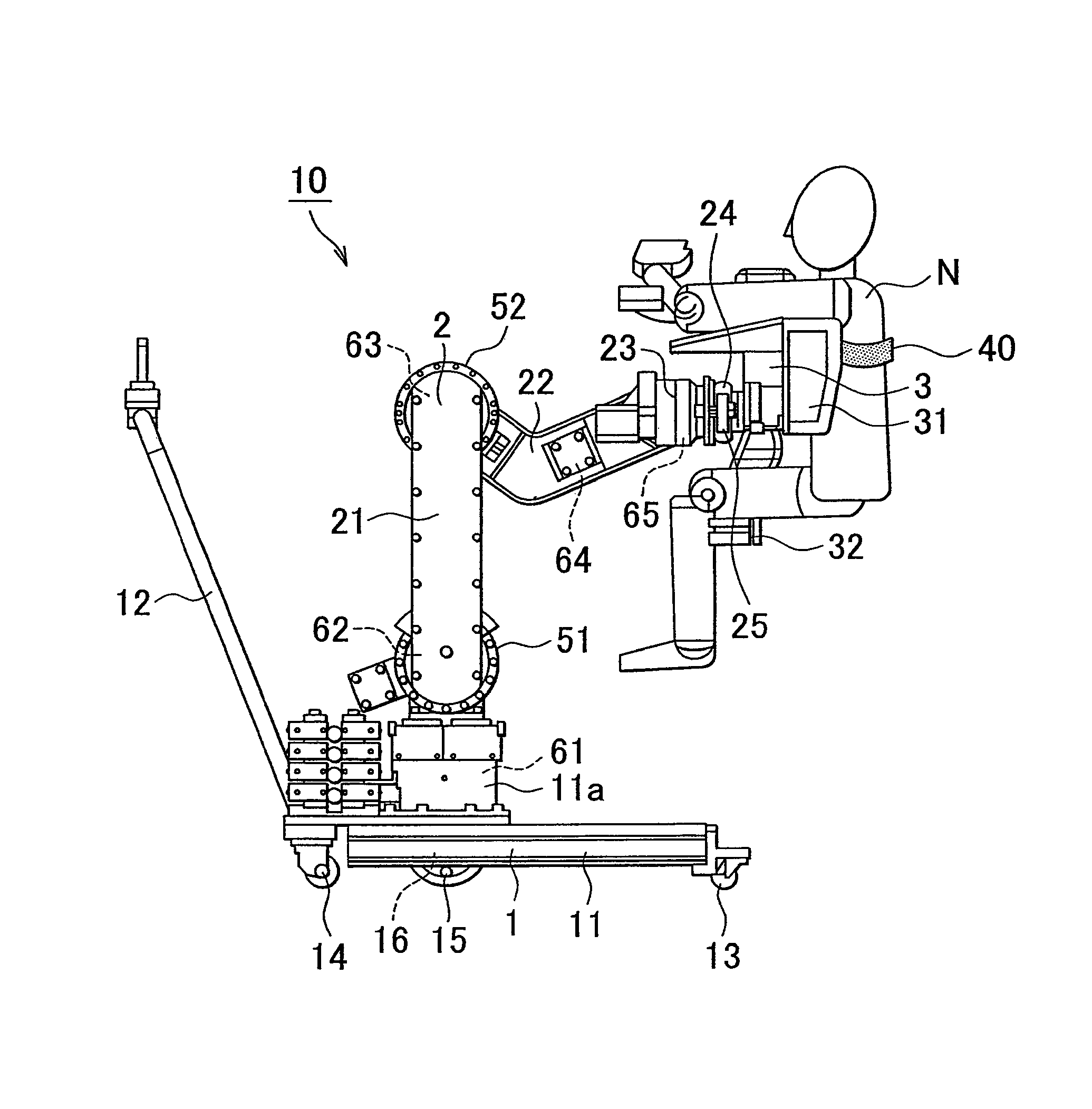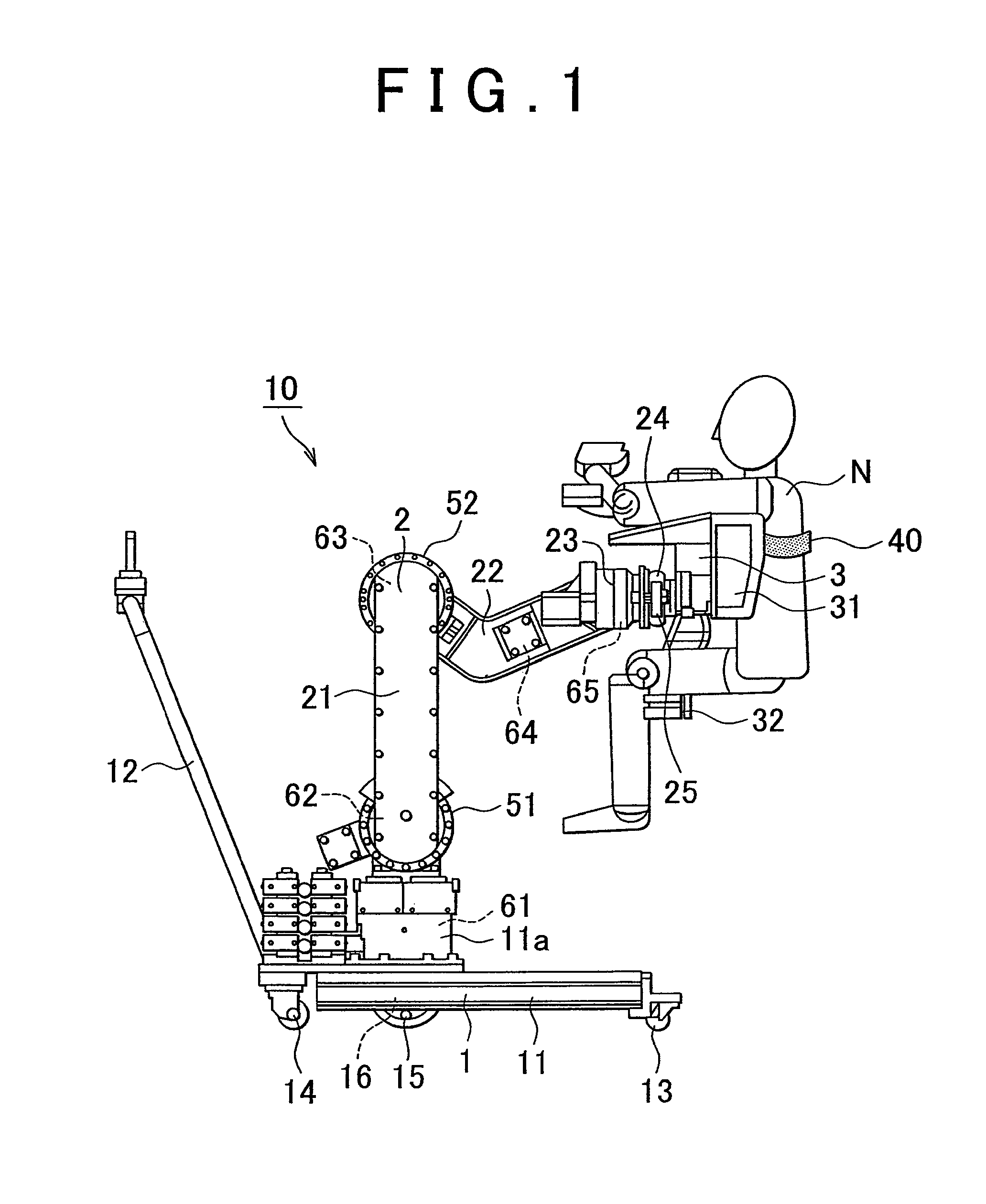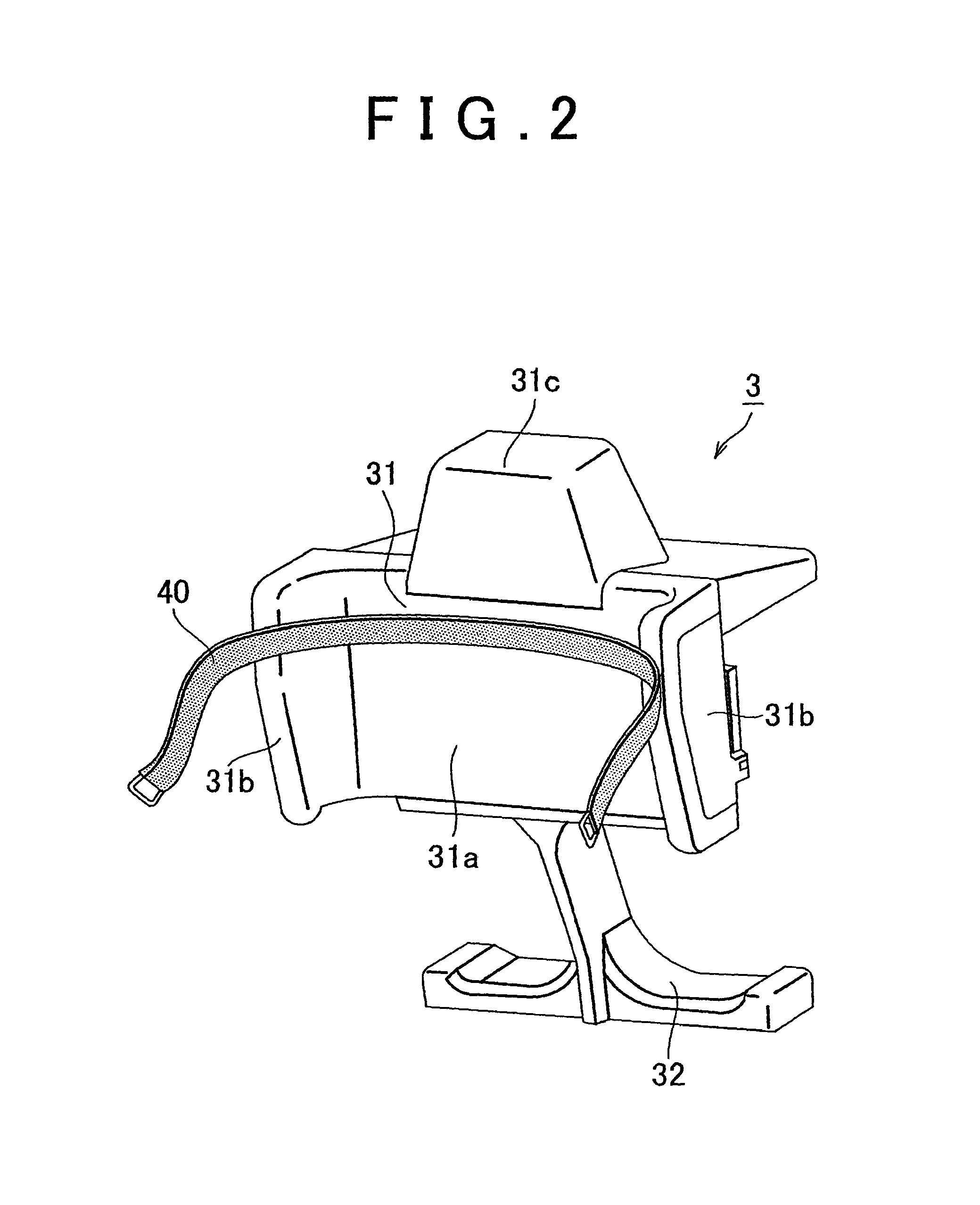Transfer assist apparatus
a technology of assist devices and transfer devices, which is applied in the field of transfer assist devices, can solve the problems of not being able to trust the apparatus in the same degree, not being able to perform by oneself, and placing a large physical load on the nursing assistant and a large mental load on the care-receiver, so as to reduce the anxiety of the care-receiver
- Summary
- Abstract
- Description
- Claims
- Application Information
AI Technical Summary
Benefits of technology
Problems solved by technology
Method used
Image
Examples
first embodiment
[0054]The first embodiment of the invention will be explained below. FIG. 1 is a side view of a transfer assist apparatus according to the first embodiment of the invention. A transfer assist apparatus 10 is provided with a carriage unit 1, a robot arm unit 2 coupled to the carriage unit 1, and a holding device 3 attached to the robot arm unit 2.
[0055]The carriage unit 1 has a carriage body 11, a handle section 12 for pushing and moving the carriage unit 1, a pair of left and right front aid wheels 13 attached to the front portion of the carriage body 11, a pair of left and right rear aid wheels 14 attached to the rear portion of the carriage body 11, and a pair of left and right drive wheels 15 that are attached to a substantially central portion of the carriage body 11 and drive the carriage unit 1. A pair of left and right sixth motors 16 that drive the drive wheels 15 is coupled to the pair of left and right drive wheels 15.
[0056]The robot arm unit 2 is a multijoint arm that has...
second embodiment
[0099]The second embodiment of the invention will be described below. The basic configuration of the second embodiment is similar to that of the first embodiment, but a specific feature of the second embodiment is that the motor speed is adjusted by adjusting a gain with the anxiety reduction control unit 110. FIG. 16 is a functional block diagram of the second embodiment. In the second embodiment, the speed limit unit 175 is not provided. Instead, the anxiety reduction control unit 110 is provided with a heart rate threshold recording unit 111 and a gain setting unit 112.
[0100]Here, several stages are set for a heart rate threshold, and a gain that determines a response speed of the motor is set correspondingly to these thresholds at several stages. For example, the gain is set to decrease with the increase in a sense of anxiety (heart rate) correspondingly to the anxiety threshold (heart rate threshold).
[0101]The gain setting unit 112 compares the heart rate of the care-receiver t...
third embodiment
[0104]The third embodiment of the invention will be described below. The basic configuration of the third embodiment is similar to that of the first embodiment, but a specific feature of the third embodiment is that optimum control is executed for each user. FIG. 17 is a functional block diagram of the third embodiment. In a case where one transfer assist apparatus 10 is shared by a plurality of care-receivers, reasons causing anxiety and degrees thereof differ among the care-receivers. In such a case, one control pattern should not be applied to all the care-receivers. Accordingly, in the third embodiment, the anxiety reduction control unit 100 is provided with a user database 200. Further, a data accumulation unit 300 is provided, and the sensor signals from the rotation sensors 71 to 75 and measurement values obtained with the anxiety measurement unit 50 are inputted in the data accumulation unit 300.
[0105]Anxiety thresholds (heart rate thresholds) and speed limit settings are re...
PUM
 Login to View More
Login to View More Abstract
Description
Claims
Application Information
 Login to View More
Login to View More - R&D
- Intellectual Property
- Life Sciences
- Materials
- Tech Scout
- Unparalleled Data Quality
- Higher Quality Content
- 60% Fewer Hallucinations
Browse by: Latest US Patents, China's latest patents, Technical Efficacy Thesaurus, Application Domain, Technology Topic, Popular Technical Reports.
© 2025 PatSnap. All rights reserved.Legal|Privacy policy|Modern Slavery Act Transparency Statement|Sitemap|About US| Contact US: help@patsnap.com



